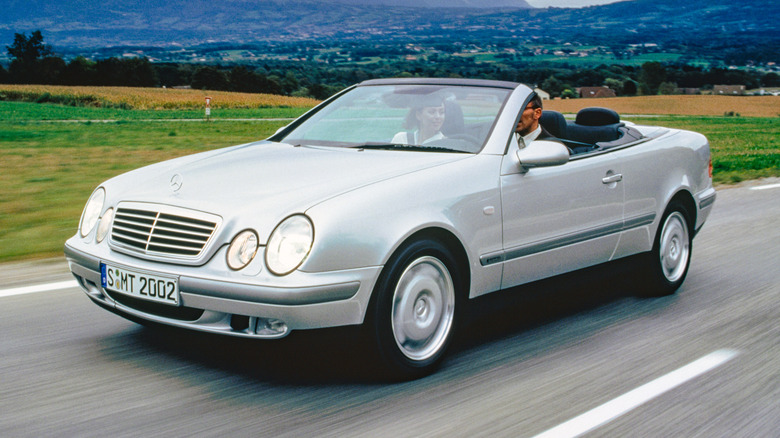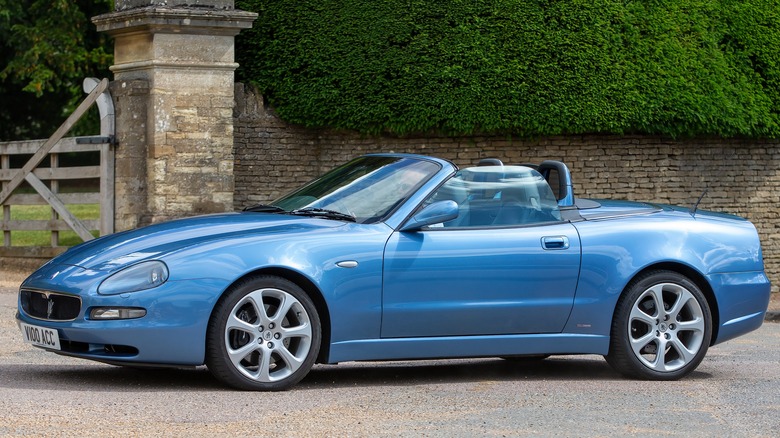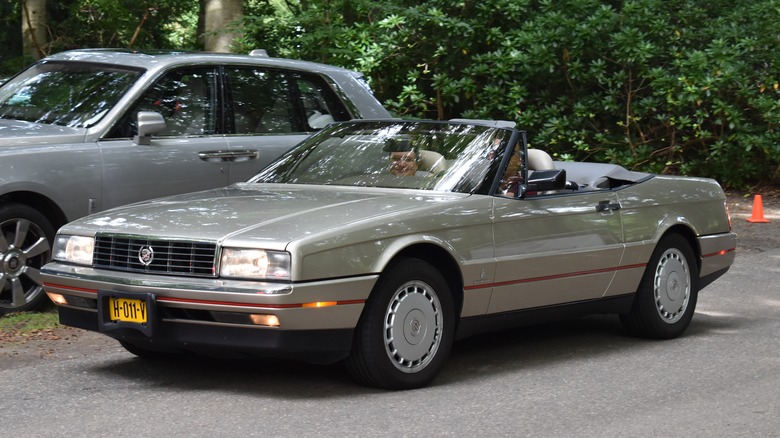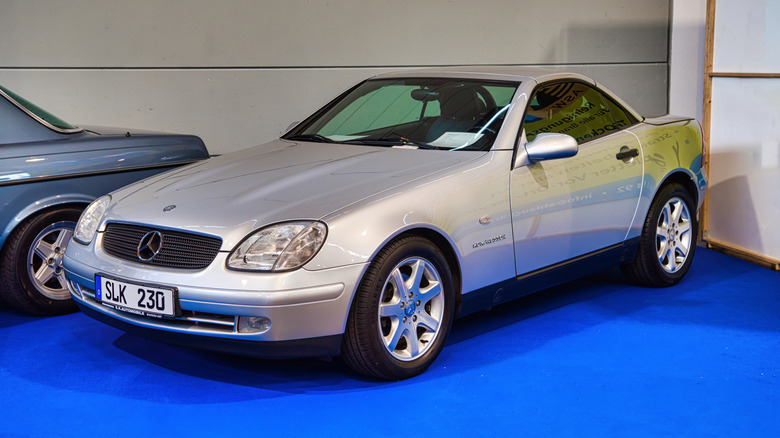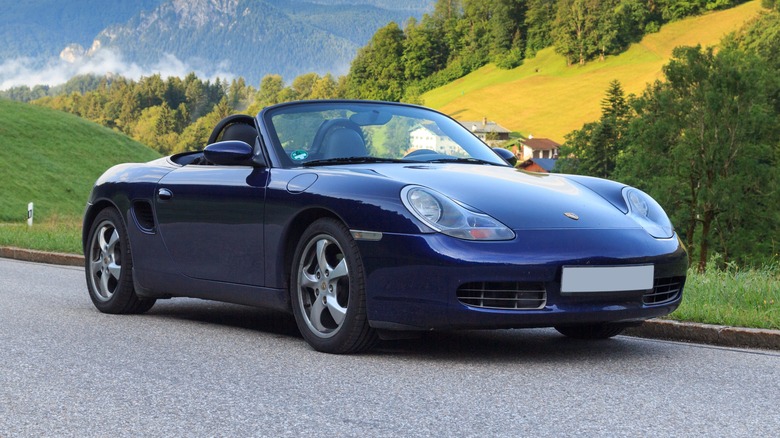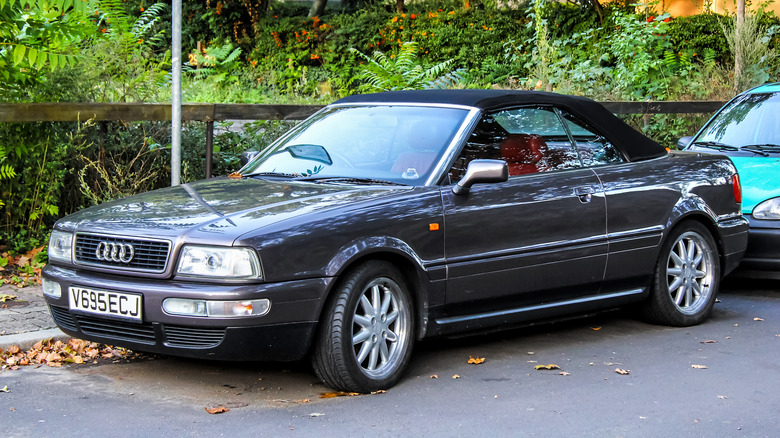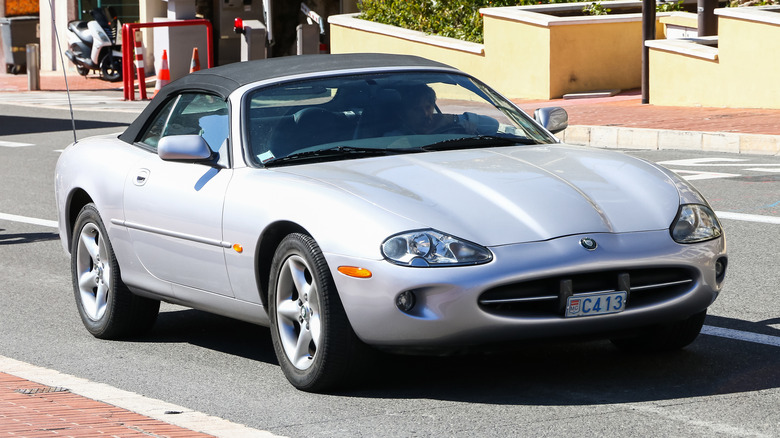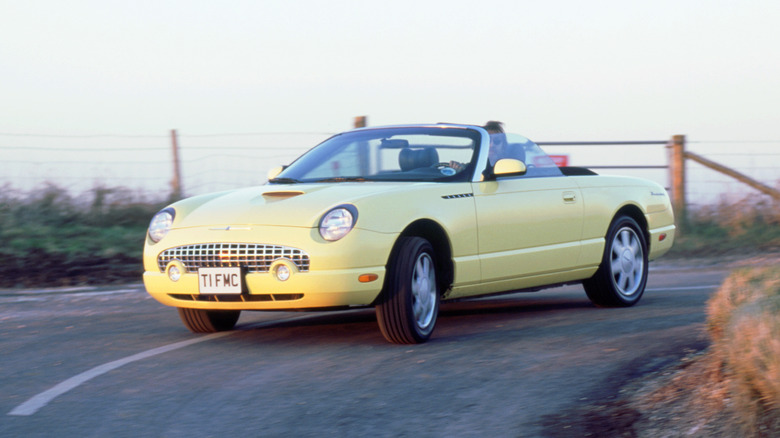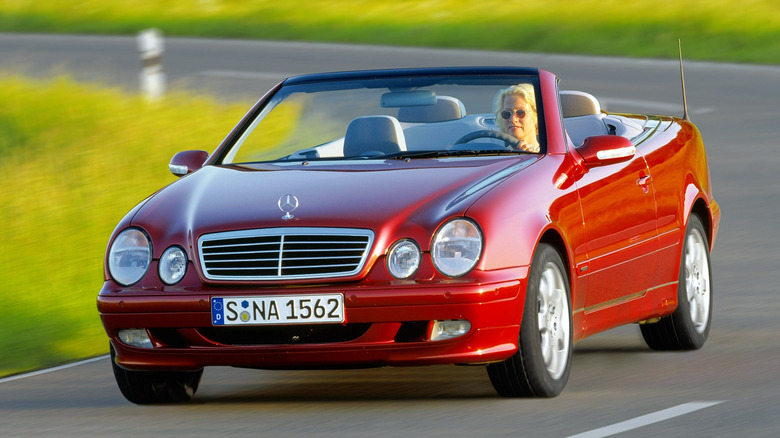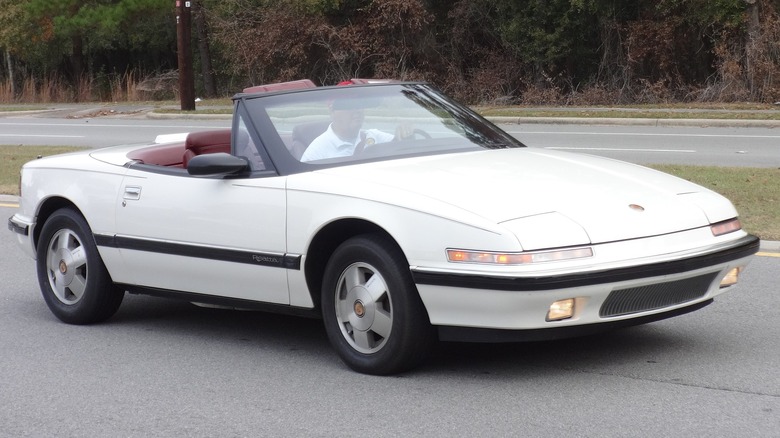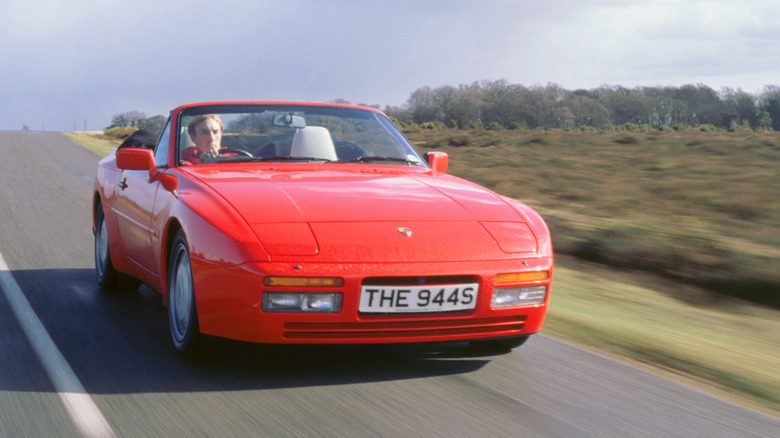10 Luxury Convertibles That Are Suspiciously Cheap
Luxury convertibles aren't as popular with buyers of new cars as they once were, and those that are still on the market can be eye-wateringly expensive. A used luxury convertible might seem like the obvious choice to solve both of those problems in one, but there are plenty of pitfalls to be aware of. Much like any used luxury car, models that appear suspiciously cheap to buy are not always the bargains that they first appear.
Some are notoriously unreliable or come with unusually high running costs. Others are considered dated or unfashionable, suffering from image problems more than mechanical ones. Rather than being a money pit, a few of the cheapest luxury convertibles are only available for such low prices because they've been overlooked by enthusiasts. The important thing is being able to tell the difference. The below convertibles are suspiciously cheap and offer opportunities to buy into a prestigious marque and gear up for long weekend cruises in the sun, all for less than the average used crossover.
Maserati Spyder
After a period of absence from American shores, the Maserati Spyder, alongside its hard-topped sibling the Coupe, marked the Trident brand's return to the market. Its styling was mostly carried over from a previous Europe-only model, the 3200GT, but the Spyder's 4.2L V8 engine was all new. It boasted 390 horsepower and, combined with the Spyder's lightweight construction, made the car one of the fastest Maseratis to date. More than two decades after its original launch, however, it's also now one of the cheapest Maseratis on the market.
Arguably, the Spyder's low price is partly due to its current age. It's not old enough to be considered a classic, yet it looks dated both inside and outside compared to modern Maseratis. Values for the car might rise again in the future as it earns its classic status, although the car's notoriously high running costs might serve to further put off collectors. These costs aren't unique to the Spyder — many older Maseratis — and Italian cars in general — cost a fortune to keep on the road, which can lead to stingier owners cutting corners on maintenance. This in turn will make the car less reliable over the long run, helping to reinforce the model's reputation as a money pit and helping to keep resale prices suspiciously cheap.
Cadillac Allanté
Although it was initially hailed as a milestone moment for the Cadillac brand, the Allanté's early quality control issues and high price meant that it never took off in the way that GM bosses had hoped. The Allanté was designed by famed Italian studio Pininfarina and initial construction also took place in Italy. Then, each half-finished car would be flown to Detroit for final assembly via one of three specially adapted Boeing 747 cargo jets.
The whole process was incredibly expensive and contributed to the Allanté being almost double the price of any other Cadillac in its lineup at the time. Alongside its build quality flaws, some criticized the car for being underpowered compared to its similarly priced rivals. Cadillac did address these issues, adding a more powerful engine in the following model years and improving reliability, but the damage had already been done.
Buyers weren't willing to take a chance on later model Allantés given the car's well-known flaws and it was axed in 1993, just six years after it first launched. Some commercially unsuccessful cars get a second life when enthusiasts take interest in them years after their production run, but so far, the Italian Caddy remains overlooked. As a result, prices have remained consistently low over the years.
Mercedes-Benz SLK (R170)
The first generation Mercedes-Benz SLK proved popular when it was new, with over 300,000 examples sold globally. It served as the most affordable entry point to convertible Mercedes ownership, and today prices have sunk to rock bottom levels. Despite what many bargain hunters might assume, that doesn't automatically mean they'll be a nightmare to maintain. The first-gen SLK is considered fairly easy to service by luxury car standards, especially with the four-cylinder engine under the hood. The V6 is slightly more temperamental and will require stricter maintenance, but both should remain reliable if properly looked after.
The SLK never managed to be the sportiest convertible in its class, especially in its less potent forms. It wasn't slow as such, but rivals from Porsche and BMW offered superior performance and handling, making the SLK the best choice for cruising rather than carving through backroads. It also wasn't the most luxurious drop-top Mercedes of its era — the flagship SL took that title — and as a result, it slipped under the radar of many collectors.
Porsche Boxster (986)
To keep costs as low as possible, the entry-level Boxster roadster shared many parts with Porsche's flagship sports car of the era, the 996 911. While that shared heritage has seen the 996 evolution of the Porsche 911 become the least desirable generation of the car for collectors, it's had the opposite effect on the Boxster. For a startlingly low price, buyers can get a mid-engined roadster that's considered a modern classic and shares many of its internals with a much more expensive car.
The Boxster was a huge sales success for Porsche and has been credited with turning around the brand's dire finances. It sold in larger numbers than previous Porsche convertibles, and as a result, there are still plenty of examples available on the used market. That has helped keep prices low, although as the supply of clean examples reduces in a few years' time, they might not always be so cheap.
Audi Cabriolet
A surprise hit in Europe after Britain's Princess Diana bought one, the Audi Cabriolet never caught on in the same way in America. The car debuted for the 1993 model year and remained on sale through 1998, with around 6,000 examples sold stateside during that time. It would get replaced in the brand's lineup by the TT, which gained much wider recognition. As a result, the Cabriolet is often overlooked, with most examples changing hands for $10,000 or less.
It might not have been too popular, but as a near-classic luxury used buy, there's a lot to like. The 80 lineup from which the Cabriolet was derived is generally considered well-built for the era, although cars will now potentially suffer from the same issues that plague all older cars, like rust, and cracking plastic and rubber parts. The Cabriolet also looks more dated than the first-generation TT, with a much more boxy design, although its rarity should turn more heads at shows and meets.
Jaguar XK8
The Jaguar XK8 replaced the XJS as the brand's grand tourer offering and was sold both as a coupe and as a convertible. Like many high-end luxury classics, it has now depreciated to a fraction of its original retail price, so much so that used buyers might suspect it to be a money pit. After all, old Jaguars don't exactly have the best reputation for reliability. The good news is that the XK8 was a step above the brand's previous offerings in terms of build quality, with its parent company Ford committing vast amounts of resources to improve the marque's offerings across the board.
The main problem with the XK8 was its all-new V8 engine, which suffered two major flaws. The first, a Nikasil cylinder lining that reacted badly to low-grade gasoline and caused excessive wear, was fixed under warranty shortly after the car was launched.
The other issue stems from a plastic timing chain tensioner used in earlier models, seemingly in a bid to cut costs. It's prone to premature failure and can cause costly engine damage, but a replacement metal part is available. Other than those issues, there are fewer weaknesses with the XK8 than with earlier Jaguar models, making it a more attractive bargain luxury convertible.
Ford Thunderbird (11th Gen)
Time hasn't been kind to the 11th-generation Ford Thunderbird. When it launched, the car's retro styling and wafting ride made it a niche hit. It recorded impressive sales figures and received a generally positive reception from the automotive press, winning MotorTrend's 2002 Car of the Year Award. However, over the following years, sales began to slip as market tastes changed.
By 2005, the Thunderbird had been axed for good as its styling fell out of fashion. It's remained out of fashion since, and a result, used prices remain low. While the Thunderbird's styling does still have its fans, there are many more who openly deride its looks. In 2009, Car and Driver even labeled it one of the "most embarrassing award winners in automotive history."
More than twenty years on from the peak of the retro car trend, the Thunderbird arguably looks more like an oversized child's toy than the funky retro-inspired roadster Ford intended it to be. Unless buyer tastes drastically change in the next few years, it seems unlikely that the Thunderbird will become a sought-after collectors' car anytime soon.
Mercedes-Benz CLK (W208)
Much like the R170 SLK, the W208 CLK has depreciated to temptingly cheap levels. However, that's not without reason — aside from the limited pool of buyers wanting to buy a 25-year-old luxury carh, the CLK also suffers from lower build quality and higher maintenance costs than many of its contemporaries. It was a popular car at launch, with such a high demand from buyers that Mercedes was forced to implement a waiting list until production capacity could be ramped up.
That means that used examples are still in ready supply, but the difference between a pristine example and a scruffy one could be significant. Suspension problems were common even when the cars were newer, alongside electrical issues. Given its age, buyers will also have to worry about rust, worn rubber and plastic components, and aging (read: leaky) roofs. So, although the CLK can be found for cheap, it's unlikely to be a used luxury bargain.
Buick Reatta
In an effort to attract new buyers and widen the brand's appeal, Buick launched the Reatta sports car in 1988. SlashGear has previously argued that it's a bit of a hidden gem, featuring a sportier edge and respectable performance but still retaining the practicality and comfort that the brand is known for. However, the short-lived convertible version was not such a hit. In an interview with MotorTrend, former Buick strategy guru Jay Qualman said that "the car was not designed as a convertible from the start, and it didn't have the rigidity" to compete against dedicated roadsters.
Both the Reatta coupe and convertible can be picked up for four-figure sums. However, there's only one option for those looking for the best iteration of the sporty Buick. It might be a rarity, but other than novelty value, the convertible has little to offer over the dynamically superior coupe, so those looking for a classic drop-top American roadster would be best served looking elsewhere.
[Featured image by Michael Rivera via Wikimedia Commons | Cropped and scaled | CC BY-SA 4.0]
Porsche 944 Cabriolet
As one of the cheapest convertible Porsches on the market, it might be easy to think that there's something wrong with the 944 Cabriolet. In reality, that's not the case — in fact, its affordable starting price is a key reason for its appeal among contemporary owners. It's reasonably affordable to maintain too, at least by Porsche standards, and spacious enough to swallow all the luggage two people would need for a weekend drive.
Like any car of its age, condition is key in ensuring reliability. While the most fastidious owners will have carefully scoured the car for any signs of wear or rust and replaced any parts before they become a problem, not every owner is so careful. However, source a clean example of the 944 Cabriolet and it represents a great way into Porsche ownership for those who can't justify splashing out on a 911 and want something more retro than a Boxster.
